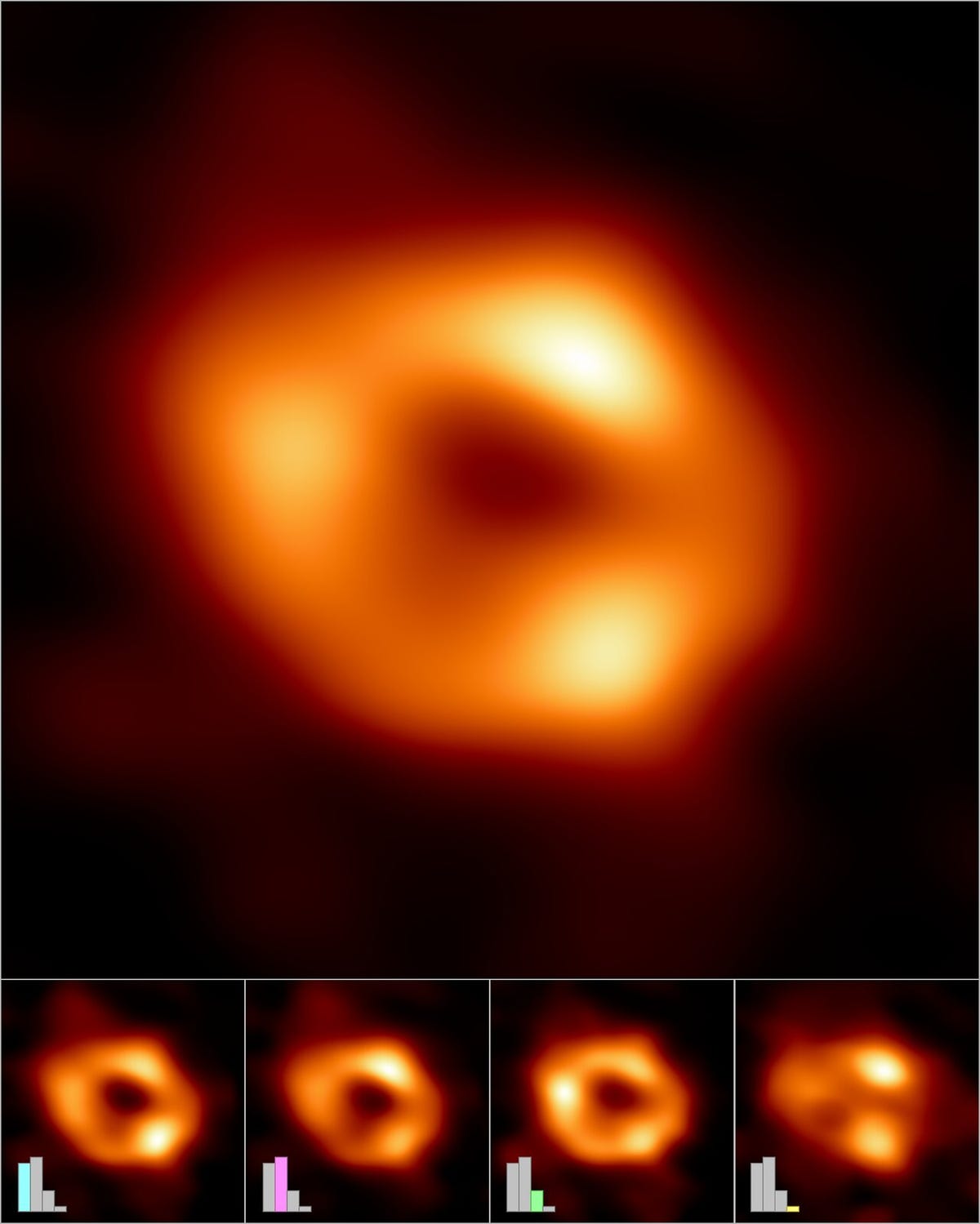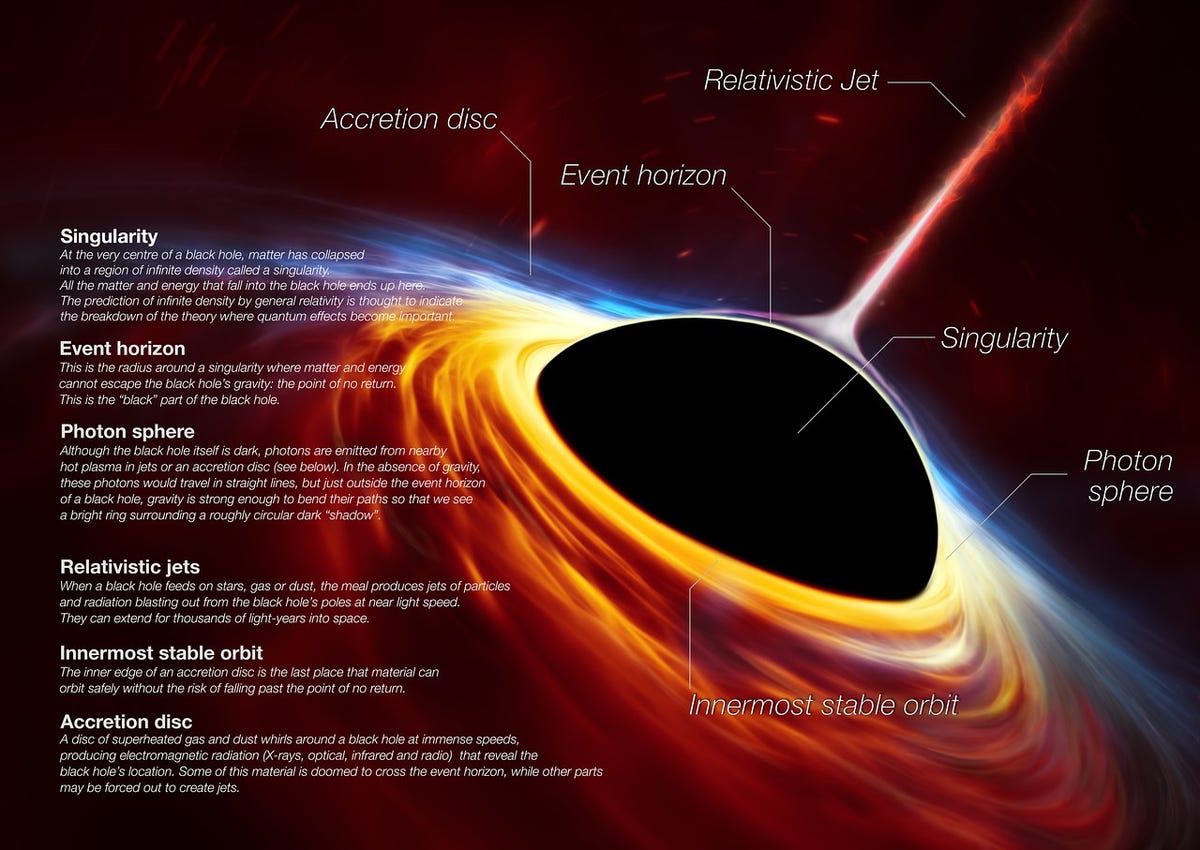
About 820,000 light-years from Earth, something strange is afoot.
Right in this region -- which is quite close, cosmically speaking -- a petite dwarf galaxy named Leo I appears to be housing an utterly massive black hole that's been flying under the radar for years. This semi-hidden void is so gargantuan, responsible for unbelievable amounts of gravitational pull and boasting a mass 3 million times that of the sun, that you'd never expect it to live within such a little realm.
But alas, there it is.
It's aptly called Leo I* -- and according to a paper published Monday in The Astrophysical Journal Letters, two scientists are hatching a plan to figure out how this unnaturally large, difficult-to-detect chasm came to be.
In their study, astrophysicists Fabio Pacucci and Avi Loeb from the Harvard-Smithsonian Center for Astrophysics describe a fascinating way to analyze Leo I* so we can dissect some of its backstory. Basically, they believe it's possible to understand the nature of Leo I* by studying the space around this black hole where lots of ancient stars seem to reside and are likely to be caught in the magnificent monster's gravitational embrace.
"Old stars become very big and red -- we call them red giant stars," Pacucci said in a statement. "Red giants typically have strong winds that carry a fraction of their mass to the environment. The space around Leo I* seems to contain enough of these ancient stars to make it observable."
"Observing Leo I* could be groundbreaking," Loeb said in a statement.
This is because, beyond its enigmatic stationing in galaxy Leo I, Leo I* is also the second-closest supermassive black hole to Earth, after the one at the heart of our own Milky Way galaxy named Sagittarius A*. (That's the void scientists imaged last year in an absolutely spectacular milestone for astronomy.)

The Event Horizon Telescope Collaboration created a single image (top frame) of the supermassive black hole at the center of our galaxy, called Sagittarius A*, or Sgr A* for short, by combining images extracted from the EHT observations.
EHT CollaborationLeo I* weirdly also has a similar mass to Sgr A* despite, again, it living in a disproportionately small galaxy – one a thousand times less massive than Sgr A*'s abode.
"This fact," Loeb said, "challenges everything we know about how galaxies and their central supermassive black holes co-evolve."
The skeleton of a black hole
With such an awesome list of attributes, you may be wondering, why haven't scientists directly observed Leo I* before?
Well, there's kind of a caveat about this black hole that makes it so hard to capture. Before we get into that, though, here's a quick primer on black hole anatomy.
There are three major components to consider when thinking about black holes: the singularity, the event horizon and the accretion disk.
To put it simply, black holes are extraordinarily dense regions of matter nestled into the fabric of space and time that exhibit equally extraordinarily strong gravitational pulls. Just one of these leviathans can take a bunch of stars, planets, space-borne dust, moons -- anything you can think of, including light -- and heave them all into a single point. That point is the singularity, and it resides in the very center of the black hole.
Next up, we have the event horizon.
The event horizon denotes the region around a black hole's singularity that you can think of as a fence beyond which light can't escape. The event horizon always sits at a specific distance from this point, called the Schwarzchild radius.
And finally, there is the accretion disk.
The accretion disk is literally a disk-like structure that sits farther away from the singularity than the event horizon, but close enough to experience the gravitational might of the beast. This thing is like a swirling moat of dust, gas and other forsaken cosmic material that has been captured by the black hole's chokehold.
But most importantly, the accretion disk is pretty key in analyzing our universe's deepest, darkest and supermassive black hole in the first place.

An illustration of a black hole's anatomy.
ESOHiding in plain sight
"Black holes are very elusive objects, and sometimes they enjoy playing hide-and-seek with us," Pacucci said. "Rays of light cannot escape their event horizons, but the environment around them can be extremely bright -- if enough material falls into their gravitational well."
In other words, black holes that are actively accreting dust and gas are more easily traceable.
In fact, gazing into the accretion disks and event horizon limits of both SgrA* and M87* is how scientists generated the world's first fiery donut void pictures to begin with. But as you might've guessed by now, Leo I* is not one of those easily noticeable, extraverted voids.
And, as Pacucci puts it, if "a black hole is not accreting mass, instead, it emits no light and becomes impossible to find with our telescopes."
However, if the astrophysicist duo is correct that red giants around Leo I* are giving off enough material to be caught in the void's accretion disk, perhaps there's some hope. "In our study, we suggested that a small amount of mass lost from stars wandering around the black hole could provide the accretion rate needed to observe it," Pacucci explained. "Leo I* is playing hide-and-seek, but it emits too much radiation to remain undetected for long."
The researchers also draw attention to how Leo I* was shown to exist in the first place by observing not its accretion disk but rather nearby stars speeding up due to the black hole's intense gravitational pull.
And though Pacucci and Loeb don't think we'll quite get a breathtaking image of Leo I* like we have of SgrA* and M87*, the team has already blocked off some time on both the Chandra X-Ray Observatory and the Very Large Array radio telescope in New Mexico to pursue their idea.
"This is exciting," Loeb said, "because science usually advances the most when the unexpected happens."
After all, before we had a portrait of Sgr A*, its stark positioning in the heart of our Milky Way once deemed it nearly impossible to observe.
Then, against all odds, we observed it -- and astronomy was forever altered.
Flying into the centre of the Milky Way to reveal the first black hole image.
EHT Collaboration








 Add Category
Add Category